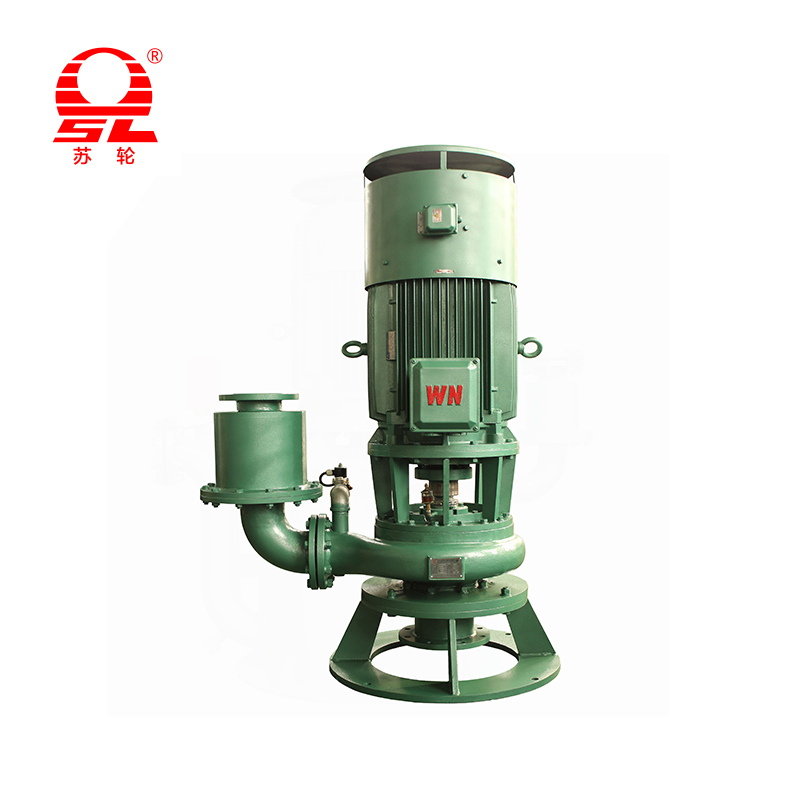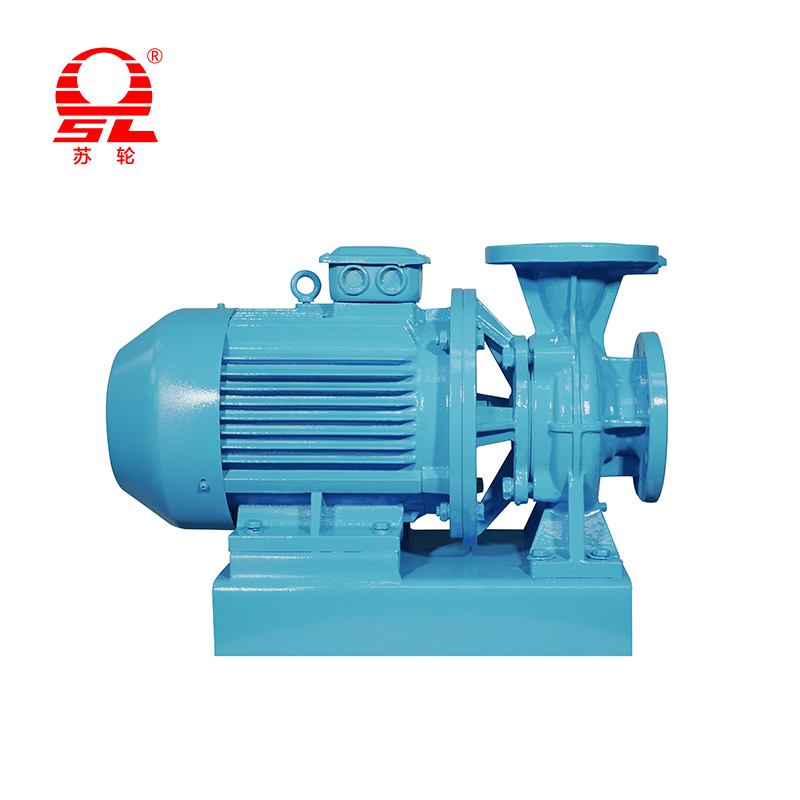What are the common vibration failure modes of horizontal centrifugal pumps
 2025.10.07
2025.10.07
 Industry News
Industry News
Horizontal centrifugal pumps play a critical role in industrial production, and vibration is a core indicator of their operating condition and reliability. Abnormal vibration not only accelerates wear of critical components such as bearings, mechanical seals, and couplings, but can also lead to unexpected downtime.
1. Mechanical Failure Modes
Mechanical failure is the most common and destructive source of vibration in centrifugal pumps. Its characteristics often occur at harmonic frequencies of the rotor speed (1X), twice the speed (2X), or higher.
1.1 Unbalance
Unbalance is caused by uneven mass distribution in the impeller, coupling, or pump shaft itself.
Causes: Casting defects, uneven wear, asymmetric key or keyway, or impeller corrosion/fouling during long-term operation.
Vibration Characteristics: Vibration energy is primarily concentrated at the 1X speed frequency, the amplitude is typically large, and the vibration direction (radial) is stable.
Impact: This causes periodic centrifugal forces to be generated during pump shaft rotation, continuously exerting them on the bearings and accelerating bearing fatigue failure.
1.2 Misalignment
Misalignment refers to the deviation in the centerline or angle between the drive (e.g., motor) and the pump shaft.
Types: Parallel misalignment and angular misalignment are classified as follows.
Vibration Characteristics: The most typical characteristic is a significant increase in vibration energy at 2X the rotational speed frequency, although 1X and 3X frequencies may also occur. Radial misalignment may be greater at 2X the rotational speed frequency, while angular misalignment is high at both 1X and 2X frequencies.
Impact: This causes periodic bending and stress changes in the coupling during rotation, generating significant reaction forces that can seriously damage the coupling, bearings, and mechanical seals.
1.3 Bearing Faults
Bearings are critical components that withstand radial and axial forces. Their failure is one of the leading causes of equipment downtime.
Vibration Characteristics: Bearing faults do not manifest at the 1X or 2X frequency, but instead produce unique high-frequency vibrations, known as bearing characteristic frequencies. These frequencies include the inner race (BPFI), outer race (BPFO), ball/roller (BSF), and cage (FTF) frequencies.
Development Stage: Early-stage faults may manifest as high-frequency random noise; in the middle stage, distinct bearing characteristic frequencies and their harmonics emerge; in the late stage, these frequencies are overwhelmed, manifesting as broadband high-frequency vibrations.
1.4 Foundation Looseness and Structural Resonance
Foundation looseness and resonance are "invisible killers" in centrifugal pump vibration diagnosis.
Mechanical Looseness: Loose anchor bolts, uneven baseplates, or excessive clearance between the bearing seat and base.
Vibration Characteristics: Typically manifested as a series of harmonic vibrations at the 1X, 2X, and 3X speed frequencies, often with the presence of half-speed frequencies (0.5X) or even more complex subharmonics, are typical signs of nonlinear mechanical looseness.
Structural Resonance: Occurs when the pump's operating frequency (1X) approaches the natural frequency of the pump or piping system.
Impact: Resulting in a dramatic amplification of vibration amplitude, with even minor imbalances or misalignments causing significant vibration.
2. Hydraulic Failure Modes
Hydraulic failures are caused by changes in liquid flow or pressure and are closely related to the pump's operating point.
2.1 Cavitation
Cavitation is the phenomenon of bubble formation and collapse caused by the pressure on the pump's suction side falling below the saturated vapor pressure of the pumped liquid.
Vibration Characteristics: A unique, random, broadband noise is generated, with vibration energy diffused in the high-frequency range, sounding like stones rolling or breaking within the pump body.
Impact: Cavitation causes severe pitting damage to the impeller material, leading to a sharp drop in head and efficiency.
2.2 Surge and Recirculation
Hydraulic instability can occur when a centrifugal pump operates below or above its design flow rate (BEP), especially at low flows.
Recirculation: At low flows, liquid can backflow at the impeller inlet or outlet, causing hydraulic shock.
Surge: In some centrifugal pumps or multi-pump parallel systems, large, periodic fluctuations in pressure and flow can occur during low-flow operation.
Vibration Characteristics: Typically manifested as low-frequency vibration, typically below 1× the rotational speed, or broadband low-frequency energy buildup. This vibration exerts cyclical shock loads on bearings.
2.3 Blade Pass Frequency (BPF)
BPF is the pressure pulsation caused by the periodic disturbance of the fluid as the impeller blades pass through the volute cutwater or diffuser vanes.
Calculation: BPF = Speed × Number of Blades.
Vibration Characteristics: Vibration energy is concentrated in the BPF and its harmonics.
Impact: Although usually a normal operating phenomenon, if the BPF amplitude is too high, it indicates that the clearance (radial clearance) between the volute tongue and the impeller outer diameter is not designed properly or is severely worn, or there is a hydraulic matching problem between the impeller and the volute.

+86-0523- 84351 090 /+86-180 0142 8659

 English
English русский
русский عربى
عربى bahasa Indonesia
bahasa Indonesia










